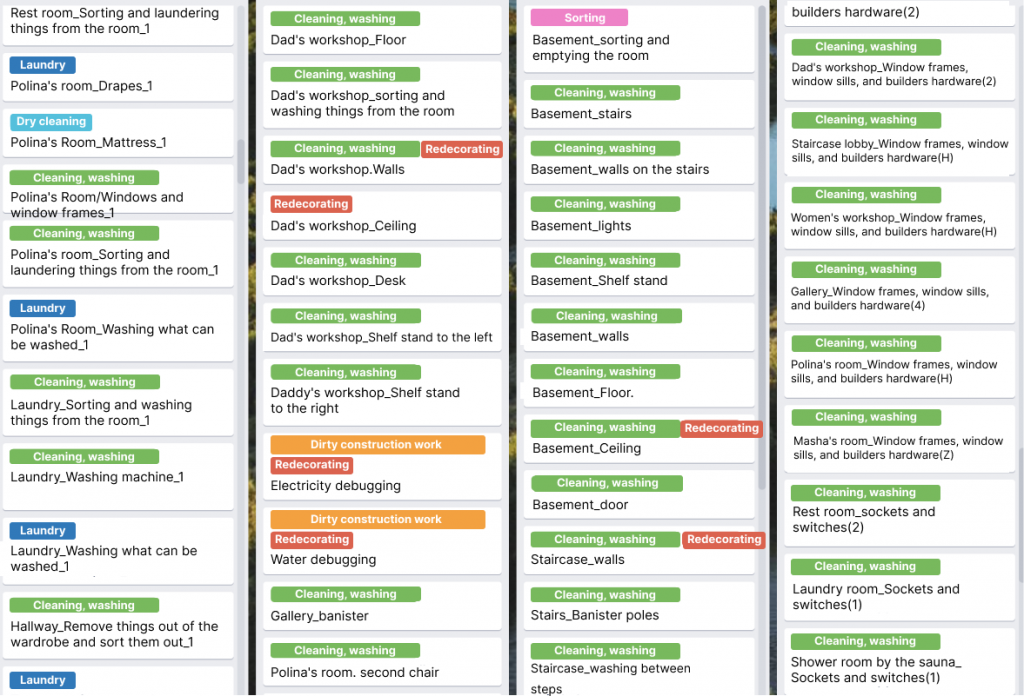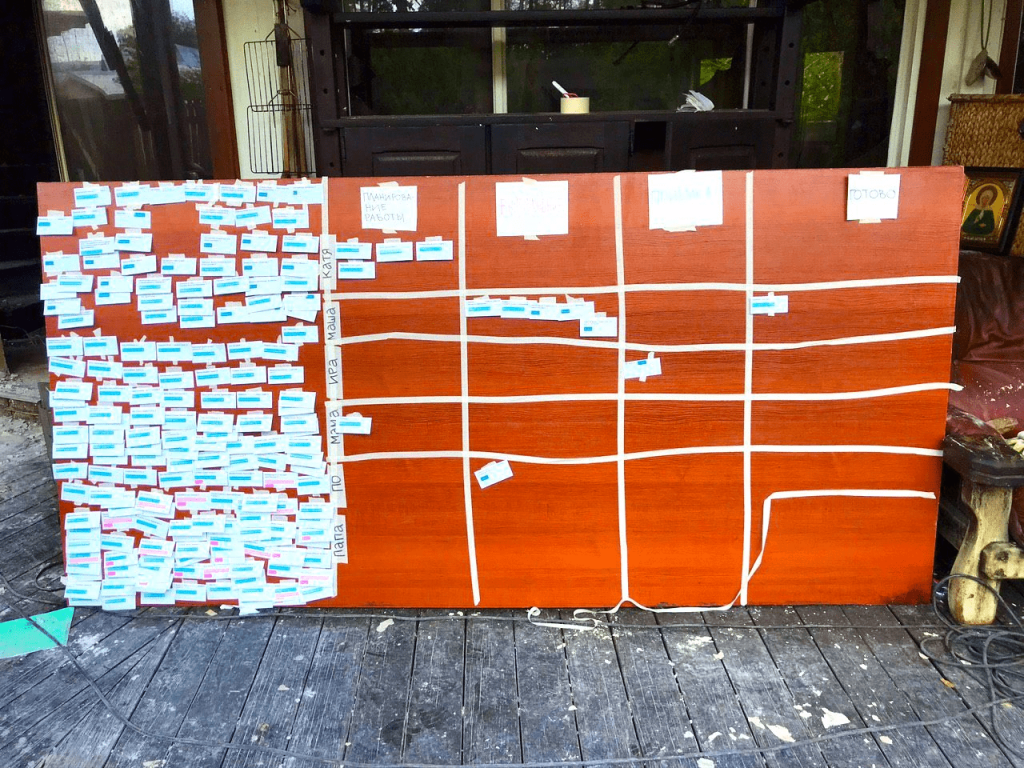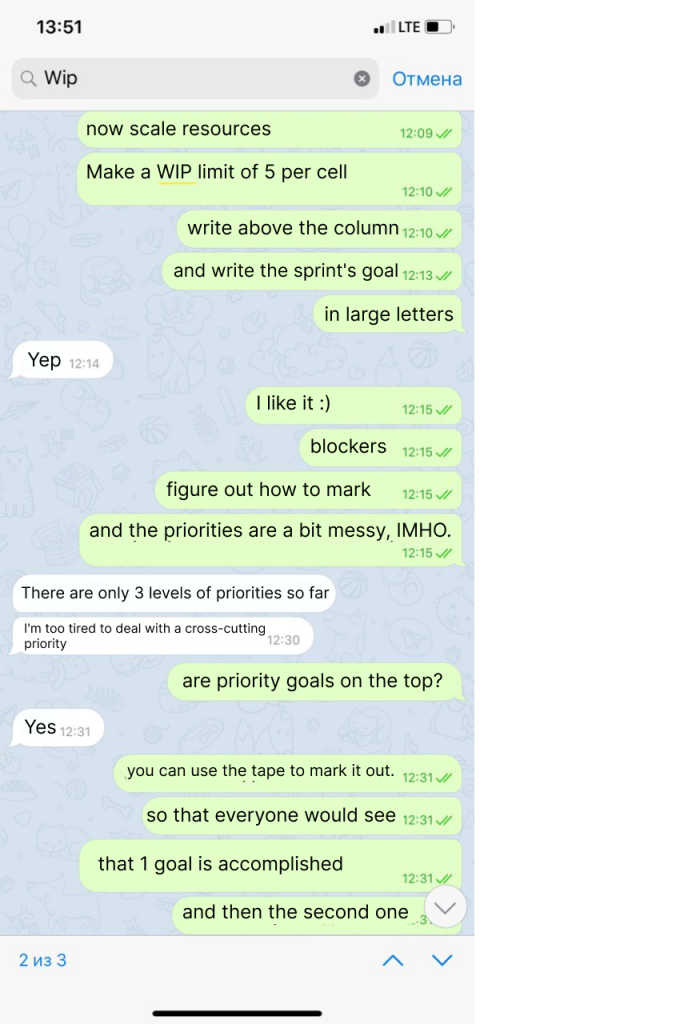Hello, everyone! I am Vitaly Doshchenko, New Business Director at IMAGA. Usually, we post articles that describe our work on digital products: apps, high-loaded systems, or chatbots. But not this time. In this article, I will talk about how the Kanban Method helped us to fix the aftermath of the crisis. I am not talking about something at work, this is about a real crisis — a fire that almost destroyed my family's house.
Disclaimer
For me, this is more than just an interesting story. I want to show you what the Kanban Method can do. It is usually synonymous with development and the IT sphere. But as you will see now, it can organize any type of work — whether you are giving your house a thorough cleaning or creating a new digital service. This article will prove useful to project managers of any level in any field, from digital to the construction industry.
What happened
A year ago, my wife's parents had an accident. Their house caught fire. The fire started in the basement and then spread to the central part of the building.
Fortunately, firefighters arrived within 15 minutes. They quickly extinguished the fire, and the house did not burn down. But the interior was seriously damaged. Thick and acrid smoke blackened the light walls and ceiling. The smell in the room was strong and toxic. You couldn't stay there for more than 20 minutes as your head would hurt and your, eyes would water.
It was difficult to understand the scale of the disaster immediately after the fire. The family was in shock, no one knew what to do. The ceilings were broken, in some places, the floor was buckled, and after the firefighters left, there was smoke and water everywhere. Some were trying to rescue expensive stuff, some were scrubbing away at the windows, and some were trying to estimate the damage. It was a mess.
Here you can see what the house looked like from the inside.
At a family meeting, we decided to move out. Staying in the house was impossible and probably dangerous. However, we could not leave the house unattended because there were many valuable things in it. So, my parents temporarily moved in with neighbors whose house was on the same plot of land.
What did we do
The day after the fire, the whole village wanted to help us. There were about 30 people there: family, friends, and neighbors. They worked from morning till night without any system. Some cleaned the walls, some moved the furniture, and some tried to cheer the parents up. Although there were plenty of helping hands, by the evening not much had changed. The fire caused a lot of damage, and it was impossible to fix everything in a day.
On the second day, fewer people came to help. Apart from family members, only five people joined us in the work — the rest had things to do. My family's mood soured. The last two nights everyone slept about four hours and worked hard, but the result was the same. We got desperate as there was a lot of work, but little manpower. It was clear that something had to change. Since we work in the digital sphere, we decided to systematize our approach to cleaning. Basically, it was just another project.
One of the Kanban Method's advantages is that it allows you to predict the result and structure the work. Creating any product is a complex process with many tasks. The Kanban Method brings structure where it is lacking.
How we implemented the Kanban Method offline
To limit the amount of work, we first set ourselves an ambitious goal. We decided that the most important thing at this point was to get the family back into the house. First, it was an understandable and achievable goal. Second, it could boost the morale of the family.
Next, we did an accounting of the work and made a Google Sheet listing all the interior, clothing, and kitchen items that were damaged. We also added there a to-do list covering the most important tasks such as cleaning floors and walls, restoring windows, drying out furniture, and fixing ceilings. We got a backlog of 200–300 tasks and transferred them to Trello to print.
Then we divided the tasks into groups. Several criteria were taken as the basis:
- The scope of the task — some could be done immediately, and some required several days.
- Room type — the toilet, kitchen, bedrooms, and living room needed to be restored.
- The priority of the task — some clearly needed to be closed first, and some could wait.
We also considered how one task depended on the other. So, the floor had to be cleaned after the walls and ceiling, the floor in passage rooms had to be washed last, and the furniture had to be taken to the dry cleaner as early as possible so it would not absorb the smell.
As a result, we ended up with this sheet:
We wrote all the tasks on the cards. The color of the card showed the type of the task:
- cleaning,
- repairs,
- dirty construction work,
- dry cleaning,
- sorting.
Not all tasks brought us closer to our goal. For example, my parents could not move into the house until the repairs and construction work were done. We couldn't outsource the sorting, and we needed specialists for dry cleaning. All of this was taken into account in our planning.
We put a piece of the collapsed ceiling next to the house and taped the cards to it. This was our task tracker. On the left there was the backlog. Family members were appointed as managers.
All the cards were arranged in four columns:
- Planning.
- In progress.
- Under review.
- Finished.
I should mention that the family took the idea quite skeptically. After three sleepless nights, they were demotivated. Some told me that instead of the «stupid» cards, they could have done something useful like washing pots or buying cleaning supplies. Some ignored the idea. But in the end, I managed to convince everyone. Having gathered around the Kanban board, everyone agreed that they would only work on tasks from the backlog. The others were not allowed.
Here are the practices of the Kanban Method we used:
- Visualizing the workflow: this is the same task board.
- Limiting the number of simultaneous tasks — set WIP limits.
- Starting to control the flow of tasks at the board with the Kanban team.
- Making all the arrangements explicit, so that everyone would work to the same standard.
- Starting to analyze the process to ensure teamwork and understand what progress we were making. Each task was sized in order to calculate productivity.
- We experimented to improve the process: tested hypotheses, measured their effects, and implemented them.
How the Kanban Method worked
To test the system, we hired the first four cleaners. This was needed to measure productivity. The managers were family members: each got one cleaner. Then we gathered them around the board and explained the rules:
- you receive tasks from your manager,
- you can only do one task,
- when ready, you need to submit the task to the manager and ask for the next one.
The task was taken at the board, and the name of the employee in charge was written on the card. At the end of the day, we learned who was the most productive. We also realized at what speed the cards moved, what blockers the cleaners had, and how often they were distracted by tasks unrelated to the main goal. It helped us study the system's behavior and realize that it worked.
After that, we decided to increase the number of participants in the Kanban process. We placed ads on some websites and held a small tender. That's how we selected 18 new cleaners. They had to strictly follow our rules. The first thing we agreed on was WIP limits:
Right above our Kanban board, we wrote in big letters that the only tasks that needed to be dealt with were those related to moving our parents back into the house. We agreed that the WIP limit per cell is five tasks, and the highest priority tasks are on top. Tasks had to be taken from left to right and moved from top to bottom. All the unfinished work on the right side of the board was the first to be finished.
One of the most important principles of the Kanban Method is a common standard of work. Everyone should understand how the system works. Its transparency makes the work meaningful and effective.
We asked our youngest, Masha and Polina, 14 and 12 years old, to supervise the process. They had to make sure that workers only took tasks from the board. They were also responsible for reviewing the completeness of tasks. When the task was done, they could move it to «Finished» and give a cleaner a new one from the backlog. They also made sure that the cleaners did not take on new tasks without completing the old ones.
The enthusiasm of our young managers helped inspire the whole family. Soon, the parents and the rest of the household joined the Kanban system.
How we calculated the effectiveness
The tasks moved quickly around the board. We realized that we had to collect statistics. To do this, we introduced the concept of Story Points and marked tasks. It turned out that four people did the work for about 30 story points. This meant that depending on motivation, competencies, or the accuracy of our assessment, a team of 18 could perform from 80 to 120 story points in a day. Now we could predict how many cleaners we would need to find in the future.
The statistics also reflected the evolution of our methods. For example, for the first day of work, we bought different cleaning products. After the first day, all team members realized that the pink bottle cleaned surfaces much faster. So, the next day, we bought only this one. This reflected on the number of story points closed per unit time. Any decision we made had an impact on how fast the cards moved around the board and on the final goal.
The results
Precisely seven days later, we reached our goal — the parents could go home.
Before that, no one in our family had ever managed the work of so many cleaners and construction workers. The number of people in the team was up to 20 people. That was why everyone was terrified. But I knew that in IT projects, teams are bigger, and I did not worry. Strictly speaking, we were even better off. In IT, one task hooks into another, so there is no point in increasing the team dramatically. With a fire, we could hire as many people as we were able to afford and it increased efficiency.
Of course, the work was not finished yet, but we could continue it in a familiar and more comfortable environment. We redecorated, the house changed the furniture, and now the house looks even better than before.
Kanban Method is a method of improving performance
Dealing with the aftermath of a fire is just one of the hundreds of tasks that the Kanban Method can help with. We use it in most of our processes. It allows you to distribute the workload of the team, predict the timing of the project, motivate the team, and improve the product..
The method is most suitable for projects with a service component. It allows you to work towards a well-defined goal and check your actions against the requirements of the customer. If any project can be seen as a service you provide, then the Kanban Method will help you provide it well.
Perhaps you have your own stories about how you applied the Kanban Method not to business tasks, but in some other, more unexpected setting. I would love to read them! If you have any questions, I am ready to answer in the comments.


